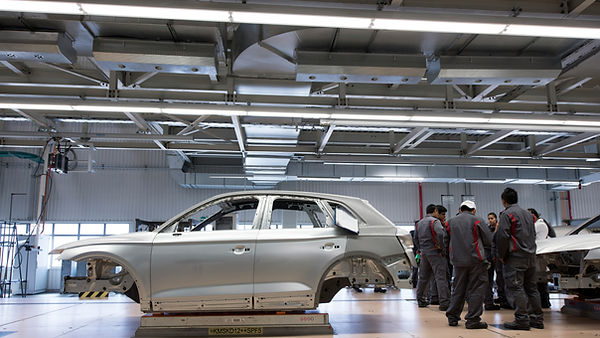Indian Auto Industry Faces Slowdown Amid Inventory Clearance Efforts

8 March 2025
The Indian automobile industry faced a challenging February 2025, with year-on-year (YoY) growth slowing to just 2.4%. This sluggish growth has prompted automakers to ramp up discounts in an effort to clear rising inventories, a trend particularly evident among passenger vehicle (PV) and two-wheeler manufacturers. According to recent reports, inventory levels have reached 75-80 days' worth of stock, valued at nearly ₹75,000 crore, compelling auto companies to extend their festive season discounts beyond the usual timeframe.
Declining Sales and Market Challenges
The slowdown was most pronounced in the two-wheeler segment, which saw an 18% YoY sales decline. Passenger vehicle sales also experienced a 2% drop, while commercial vehicle sales declined by 5.2%. Three-wheeler sales were down by 4.5%. However, the tractor segment remained a bright spot, registering an 18% YoY growth, largely driven by strong rural demand.
Tata Motors, which was one of the best-performing Nifty 50 stocks in 2023, has now found itself among the worst performers due to declining vehicle sales. Despite this downturn, the company is making strategic moves into the electric vehicle (EV) segment, introducing high-end EV models to regain lost momentum.
Market Leaders and Sales Revenue Analysis
Maruti Suzuki continues to dominate the Indian passenger vehicle market with a 30% market share. Mahindra has climbed to second place, capturing a 17% share, surpassing Hyundai (14%) and Toyota (13%). This shift reflects Mahindra's strong focus on the SUV segment, which has gained significant traction among consumers.
From a sales revenue perspective (April 2024 - January 2025), Maruti Suzuki led the total PV sales with ₹1,24,587 crore. However, Mahindra emerged as the top seller in the SUV category, generating ₹70,996 crore, surpassing Maruti Suzuki. Hyundai, Toyota, and Tata Motors followed in both overall sales and SUV revenues, showcasing varying performance across vehicle segments. The data was compiled by JATO Dynamics and includes sales of hatchbacks, sedans, SUVs/UVs, and vans.

Automakers' Strategies Amid Declining Sales
In response to the downturn, major automakers have taken different strategic approaches:
Maruti Suzuki: While its overall PV sales declined by 3.0%, its UV segment witnessed a 6.2% growth.
Mahindra & Mahindra: Continued its upward trajectory with an 18.9% increase in PV sales, strengthening its position in the SUV market.
Hyundai: Faced a minor setback, with a 2.9% drop in PV/UV sales.
Tata Motors: Struggled with an 8.8% decline in PV sales but remains focused on launching high-end EVs to drive future growth.
Meanwhile, Toyota and Kia have continued to find success in the premium SUV category, reporting 13% and 24% growth, respectively. These numbers highlight a growing consumer preference for premium offerings in the Indian auto market.
Rising Discounts to Clear Inventory
With a surplus of unsold vehicles, manufacturers have resorted to aggressive discounting strategies to attract customers. Companies like Maruti Suzuki and Hyundai have extended their festive discounts into early 2025, offering reductions of up to ₹2 lakh on certain models. This move aims to stimulate demand and reduce stock levels, ensuring smoother operations in the coming months.
For instance, Maruti Suzuki has rolled out cash rebates ranging from ₹20,000 to ₹35,000 on popular models like the Alto K10, WagonR, and S-Presso. Hyundai Motor India is providing substantial discounts across its lineup, with deep price cuts to improve sales figures. The impact of these strategies will become evident in the next quarter, as the industry watches closely to gauge consumer response.
Outlook for 2025
Looking ahead, the Indian auto industry faces a mix of challenges and opportunities. While declining sales and inventory concerns persist, rising demand for premium SUVs, EVs, and rural tractor sales present areas of growth. Tata Motors’ push for high-end EVs and Mahindra’s dominance in the SUV segment could shape market trends in the coming months.
As competition intensifies, automakers will need to balance pricing strategies, product innovation, and consumer demand to navigate the evolving landscape. The performance of the industry in Q2 2025 will be crucial in determining whether the sector can overcome its current slowdown or whether deeper structural changes will be required to restore growth.
_edited.png)


